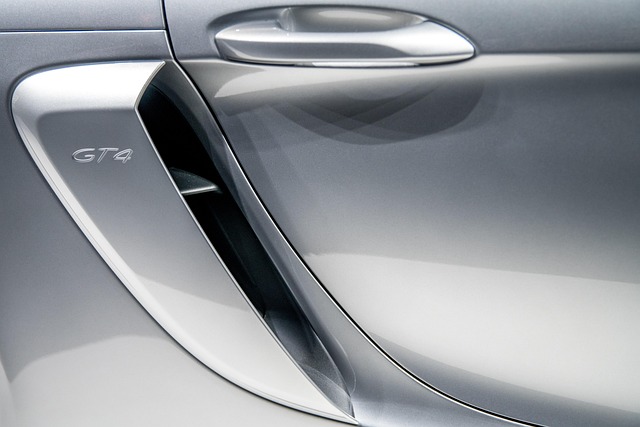Cold Air Intakes (CAIs) are a popular modification for car enthusiasts seeking improved performance and fuel efficiency. By delivering cool, dense air directly to the engine, CAIs facilitate more efficient combustion, boosting horsepower and torque. Choosing the right CAI involves understanding your vehicle's needs, considering material quality, design compatibility, and advanced filter designs. Installation typically includes disconnecting the stock intake, locating the air filter housing, and ensuring proper sealing. Regular inspection, maintenance, and cleaning are crucial for optimal performance and reliability. Aftermarket CAIs offer significant power boosts, improved throttle response, and better engine sound compared to factory alternatives.
Discover the power of easy, do-it-yourself upgrades with cold air intakes (CAIs). This comprehensive guide explores the benefits of CAIs, helping you navigate the options available for your vehicle. From understanding their role and choosing the right fit to a detailed step-by-step installation process, we demystify the DIY experience. Learn about common challenges, troubleshooting tips, and compare aftermarket intakes with factory alternatives. Select the perfect cold air intake to unleash your vehicle’s performance.
- Understanding Cold Air Intakes: Their Role and Benefits
- Choosing the Right Cold Air Intake for Your Vehicle
- Step-by-Step Guide to Installing a DIY Cold Air Intake
- Common Challenges and Troubleshooting Tips
- Unleash Performance: Aftermarket Intakes vs. Factory Alternatives
Understanding Cold Air Intakes: Their Role and Benefits

Cold Air Intakes (CAIs) are a popular modification among car enthusiasts looking to enhance their vehicle’s performance and fuel efficiency. By allowing cooler air to enter the engine, CAIs contribute to more efficient combustion, which can result in better horsepower and torque figures. This is particularly beneficial for vehicles with turbocharged or supercharged engines, as cool air is denser and contains more oxygen, enabling the engine to burn fuel more effectively.
Selecting the right Cold Air Intake system involves understanding your vehicle’s specific needs and underhood airflow solutions. Modern CAIs are designed to seamlessly integrate with factory components, ensuring optimal airflow while providing easy installation and minimal disruption to the vehicle’s overall design. These upgrades not only offer performance benefits but also serve as efficient engine cooling solutions, keeping your engine running optimally during prolonged periods of high-performance driving. With various options available in the market, auto enthusiasts can find the perfect CAI to suit their preferences, ensuring their vehicles deliver the best possible driving experience while boasting impressive auto cooling enhancements.
Choosing the Right Cold Air Intake for Your Vehicle

Choosing the right cold air intake for your vehicle involves understanding both its performance needs and compatibility with your make and model. Cold air intakes (CAIs) are open air induction systems designed to deliver cool, dense air directly into the engine, enhancing combustion efficiency and boosting power output. When selecting a CAI, consider factors such as material quality and construction, as well as the specific design tailored for your vehicle’s contours. Opting for a high-quality, factory-like fit ensures optimal airflow and minimal restrictions, maximizing the benefits of the upgrade.
Furthermore, differentiating between stock air filters and high-performance alternatives is key. Many off-road cold air intakes come with advanced filter designs that not only capture contaminants but also allow for easier cleaning or replacement, ensuring sustained efficiency over time. Remember, a well-chosen cold air intake system can significantly improve your vehicle’s performance and fuel economy, making it a worthwhile DIY upgrade for any car enthusiast.
Step-by-Step Guide to Installing a DIY Cold Air Intake

Upgrading your vehicle’s air intake system is a great way to boost performance and efficiency. If you’re looking for an easy DIY project, installing a Cold Air Intake (CAI) is a popular choice among car enthusiasts. This step-by-step guide will walk you through the process of selecting the right cold air intake for your vehicle and installing it like a pro.
Start by researching different types of open air induction systems available in the market. Consider factors like compatibility with your vehicle’s make and model, as well as the benefits each design offers. Lightweight cold air feeders are a popular choice due to their ease of installation and performance gains. Once you’ve selected the perfect CAI for your needs, it’s time to get started on the installation process. This typically involves locating the existing air filter housing, disconnecting the stock air intake, and installing the new CAI components. Ensure proper sealing for a leak-free system and enjoy the improved engine sound and performance that comes with a successful cold air intake installation.
Common Challenges and Troubleshooting Tips

When it comes to selecting a cold air intake (CAI), one of the primary challenges is navigating the vast options available and choosing an efficient engine cooling solution that aligns with your vehicle’s needs. Many DIY enthusiasts struggle with understanding the differences between various performance-oriented air intakes, especially when considering modifications for off-road use. This can lead to incorrect installations or suboptimal performance gains.
Troubleshooting common issues often involves identifying leaks, ensuring proper routing, and maintaining airflow efficiency. For instance, a poorly designed CAI might result in reduced engine performance due to inadequate airflow. Conversely, an off-road CAI that doesn’t account for extreme conditions could lead to excessive dust ingestion. Regular inspection and maintenance are key to preventing these challenges. Tips include checking gaskets for wear, sealing all connections, and cleaning the intake regularly, especially when venturing off-road. These simple measures can ensure your CAI delivers the promised performance gains while maintaining reliability.
Unleash Performance: Aftermarket Intakes vs. Factory Alternatives

Upgrading your vehicle’s cold air intake (CAI) can significantly unleash its performance potential, a fact that both aftermarket intakes and factory alternatives aim to tap into but often only one succeeds. Aftermarket intakes, known for their top-secret car intake upgrades, offer a world of benefits over the standard factory options. These custom-engineered components are designed with one goal: to optimize airflow, reducing restrictions and allowing your engine to breathe more efficiently. This simple yet powerful modification translates into improved throttle response, increased horsepower, and a throaty roar that every car enthusiast craves.
When considering a CAI upgrade, it’s essential to look beyond the initial cost and explore factors like ease of installation, maintenance requirements, and long-term performance benefits. While factory alternatives might be more readily available and seemingly less complicated, they often lack the advanced design features found in aftermarket intakes, which are performance-oriented air intakes designed for maximum effect. With proper care and regular cold air intake maintenance, these upgrades can last for years, continuing to deliver enhanced engine performance long after the initial installation.
Upgrading your vehicle’s cold air intake (CAI) can be a straightforward and cost-effective way to enhance performance and efficiency. By selecting the right CAI tailored to your vehicle, you can enjoy improved engine response and fuel economy. The DIY installation process, as outlined in this article, enables car enthusiasts to take control of their modifications, fostering a sense of accomplishment and customization. Remember, when choosing a cold air intake, consider factors like compatibility, material quality, and the potential for easier maintenance. With the right approach, you can transform your vehicle’s performance without breaking the bank.



